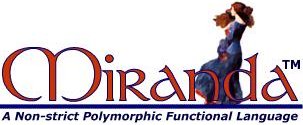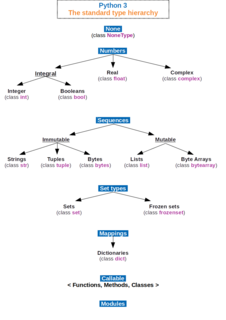Related Research Articles
In computer science, functional programming is a programming paradigm where programs are constructed by applying and composing functions. It is a declarative programming paradigm in which function definitions are trees of expressions that map values to other values, rather than a sequence of imperative statements which update the running state of the program.
An abstract machine is a computer science theoretical model that allows for a detailed and precise analysis of how a computer system functions. It is analogous to a mathematical function in that it receives inputs and produces outputs based on predefined rules. Abstract machines vary from literal machines in that they are expected to perform correctly and independently of hardware. Abstract machines are “machines” because they allow step-by-step execution of programmes; they are “abstract” because they ignore many aspects of actual (hardware) machines. A typical abstract machine consists of a definition in terms of input, output, and the set of allowable operations used to turn the former into the latter. They can be used for purely theoretical reasons as well as models for real-world computer systems. In the theory of computation, abstract machines are often used in thought experiments regarding computability or to analyse the complexity of algorithms. This use of abstract machines is connected to the field of computational complexity theory, such as finite state machines, Mealy machines, push-down automata, and Turing machines.

Miranda is a lazy, purely functional programming language designed by David Turner as a successor to his earlier programming languages SASL and KRC, using some concepts from ML and Hope. It was produced by Research Software Ltd. of England and was the first purely functional language to be commercially supported.

In computer science and computer programming, a data type is a set of possible values and a set of allowed operations on it. A data type tells the compiler or interpreter how the programmer intends to use the data. Most programming languages support basic data types of integer numbers, floating-point numbers, characters and Booleans. A data type constrains the possible values that an expression, such as a variable or a function, might take. This data type defines the operations that can be done on the data, the meaning of the data, and the way values of that type can be stored.
Generic programming is a style of computer programming in which algorithms are written in terms of types to-be-specified-later that are then instantiated when needed for specific types provided as parameters. This approach, pioneered by the ML programming language in 1973, permits writing common functions or types that differ only in the set of types on which they operate when used, thus reducing duplication. Such software entities are known as generics in Ada, C#, Delphi, Eiffel, F#, Java, Nim, Python, Go, Rust, Swift, TypeScript and Visual Basic .NET. They are known as parametric polymorphism in ML, Scala, Julia, and Haskell ; templates in C++ and D; and parameterized types in the influential 1994 book Design Patterns.
Unlambda is a minimal, "nearly pure" functional programming language invented by David Madore. It is based on combinatory logic, an expression system without the lambda operator or free variables. It relies mainly on two built-in functions and an apply operator. These alone make it Turing-complete, but there are also some input/output (I/O) functions to enable interacting with the user, some shortcut functions, and a lazy evaluation function. Variables are unsupported.
In computer science, pattern matching is the act of checking a given sequence of tokens for the presence of the constituents of some pattern. In contrast to pattern recognition, the match usually has to be exact: "either it will or will not be a match." The patterns generally have the form of either sequences or tree structures. Uses of pattern matching include outputting the locations of a pattern within a token sequence, to output some component of the matched pattern, and to substitute the matching pattern with some other token sequence.
Template Haskell is an experimental language extension to the Haskell programming language implemented in the Glasgow Haskell Compiler. In early incarnations it was also known as Template Meta-Haskell.
Hugs, also Hugs 98, is a bytecode interpreter for the functional programming language Haskell. Hugs is the successor to Gofer, and was originally derived from Gofer version 2.30b. Hugs and Gofer were originally developed by Mark P. Jones, now a professor at Portland State University.
The Glasgow Haskell Compiler (GHC) is an open-source native code compiler for the functional programming language Haskell. It provides a cross-platform environment for the writing and testing of Haskell code and it supports numerous extensions, libraries, and optimisations that streamline the process of generating and executing code. GHC is the most commonly used Haskell compiler. The lead developers are Simon Peyton Jones and Simon Marlow.
Hope is a small functional programming language developed in the 1970s at the University of Edinburgh. It predates Miranda and Haskell and is contemporaneous with ML, also developed at the University. Hope was derived from NPL, a simple functional language developed by Rod Burstall and John Darlington in their work on program transformation. NPL and Hope are notable for being the first languages with call-by-pattern evaluation and algebraic data types.
In computer science, a type class is a type system construct that supports ad hoc polymorphism. This is achieved by adding constraints to type variables in parametrically polymorphic types. Such a constraint typically involves a type class T and a type variable a, and means that a can only be instantiated to a type whose members support the overloaded operations associated with T.
In functional programming, a generalized algebraic data type is a generalization of parametric algebraic data types.
In the area of mathematical logic and computer science known as type theory, a kind is the type of a type constructor or, less commonly, the type of a higher-order type operator. A kind system is essentially a simply typed lambda calculus "one level up", endowed with a primitive type, denoted and called "type", which is the kind of any data type which does not need any type parameters.
This article describes the features in Haskell.
Haskell is a general-purpose, statically-typed, purely functional programming language with type inference and lazy evaluation. Designed for teaching, research and industrial applications, Haskell has pioneered a number of programming language features such as type classes, which enable type-safe operator overloading. Haskell's main implementation is the Glasgow Haskell Compiler (GHC). It is named after logician Haskell Curry.
In functional programming, an iteratee is a composable abstraction for incrementally processing sequentially presented chunks of input data in a purely functional fashion. With iteratees, it is possible to lazily transform how a resource will emit data, for example, by converting each chunk of the input to uppercase as they are retrieved or by limiting the data to only the five first chunks without loading the whole input data into memory. Iteratees are also responsible for opening and closing resources, providing predictable resource management.

PureScript is a strongly-typed, purely-functional programming language that compiles to JavaScript. It can be used to develop web applications, server side apps, and also desktop applications with use of Electron. Its syntax is mostly comparable to that of Haskell. In addition, it introduces row polymorphism and extensible records. Also, contrary to Haskell, PureScript adheres to a strict evaluation strategy.
References
- 1 2 "Ωmega Users' Guide" . Retrieved 2007-06-09.
- ↑ Sheard, Tim; Nathan Linger (June 30, 2007). "Programming in Ωmega". 2nd Central European Functional Programming School.